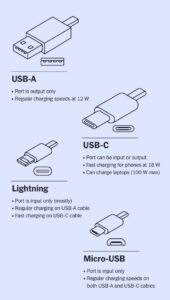Have you ever wondered how to check battery amps with a multimeter? Well, look no further! In this blog article, we will guide you through the simple steps to measure battery amps using a multimeter. Whether you’re a beginner or an experienced DIY enthusiast, this essential skill will come in handy when troubleshooting or assessing the health of your batteries. So, let’s dive right in and learn how to check battery amps with a multimeter for a seamless and accurate measurement.
How To Check Battery Amps With A Multimeter
When it comes to checking battery amps, a multimeter is an essential tool that can provide accurate measurements. Whether you’re troubleshooting a car battery, testing the amps of a household battery, or working with any other type of battery, a multimeter can help you determine its current output. In this comprehensive guide, we will walk you through the step-by-step process of checking battery amps with a multimeter, providing you with all the necessary information and tips to ensure accurate readings.
Understanding Battery Amps
Before we dive into the details of checking battery amps with a multimeter, it’s important to understand what amps are and how they relate to batteries. Amps, short for amperes, measure the current flow in an electrical circuit. They indicate the rate at which electric charges pass through a point in a circuit. In simple terms, amps represent the strength or power of the current.
When it comes to batteries, amps represent the current output they can deliver. Battery amps are critical as they determine how long a battery can power a device before it needs recharging or replacement. Monitoring battery amps is essential for assessing battery health, diagnosing potential issues, and ensuring optimal performance.
Choosing the Right Multimeter
To check battery amps accurately, you need a multimeter capable of measuring current. When selecting a multimeter, consider the following factors:
1. Amps Range: Ensure that the multimeter you choose has a suitable range for measuring amps. Most multimeters have several current ranges, such as 200mA, 2A, 10A, etc. Select a range that can accommodate the expected current draw of your battery.
2. Accuracy: Look for a multimeter with high accuracy for current measurements. The higher the accuracy, the more reliable your readings will be.
3. Fuse Protection: Make sure the multimeter has built-in fuse protection, especially when dealing with higher current ranges. This protects both the multimeter and the battery from potential damage in case of a current overload.
4. Additional Features: Consider other features that may be helpful, such as auto-ranging, data hold, backlit display, and continuity testing.
Once you have selected the right multimeter, let’s move on to the steps of checking battery amps.
Step 1: Prepare Your Equipment
Before starting the measurement process, gather the following equipment:
- A multimeter capable of measuring amps
- Test leads or probes
- A fully charged battery to be tested
Ensure that the battery you are testing is disconnected from any devices and isolated from the electrical system.
Step 2: Set Up the Multimeter
Now, let’s set up the multimeter for measuring amps:
- Turn off your multimeter if it is already on.
- Identify the current measurement dial or button on your multimeter. It is usually labeled with “A” for amps.
- Switch the dial or button to the highest current range available. For example, if your battery’s expected current draw is around 1A, select the 2A range.
- Check if your multimeter requires the test leads to be moved to a specific socket for current measurements. Some multimeters have separate sockets for voltage, current, and resistance measurements.
- Insert the black test lead into the common (COM) socket on the multimeter.
- Insert the red test lead into the current (mA, A) socket on the multimeter.
Your multimeter is now set up and ready for measuring battery amps.
Step 3: Connect the Multimeter to the Battery
Now, let’s connect the multimeter to the battery for measuring its amps:
- Identify the positive (+) and negative (-) terminals of the battery.
- Connect the black test lead to the negative (-) terminal of the battery.
- Connect the red test lead to the positive (+) terminal of the battery.
Make sure the test leads have a secure connection to the battery terminals to avoid any resistance or loose connections that may affect the accuracy of your readings.
Step 4: Take the Amps Measurement
With the multimeter connected to the battery, it’s time to take the amps measurement:
- Turn on your multimeter.
- Ensure that the multimeter is set to the correct current range.
- Observe the multimeter display. It should show the current value in amps (A).
- Stabilize the current by letting the battery draw its normal load for a few seconds.
- Record the amps measurement displayed on the multimeter.
If you want to monitor the amps over time, you can keep the multimeter connected to the battery for an extended period. This is useful when checking battery discharge rates or assessing performance under different conditions.
Step 5: Analyzing the Measurement
After obtaining the amps measurement, it’s important to analyze the results:
- If the amps measurement falls within the expected range for the specific battery, it indicates that the battery is functioning correctly.
- If the amps measurement is significantly lower than expected, it may suggest a weak or faulty battery that requires further investigation.
- If the amps measurement is unusually high, it could indicate a problem with the battery, such as an internal short circuit or excessive current draw.
Remember that different types of batteries have different amp ranges, so consult the manufacturer’s specifications or relevant documentation to determine the expected amps for your specific battery.
Tips and Precautions
To ensure accurate and safe measurements when checking battery amps with a multimeter, keep the following tips and precautions in mind:
- Always follow the manufacturer’s instructions for your multimeter.
- Choose the appropriate current range on your multimeter to prevent overload and potential damage.
- Securely connect the test leads to the battery terminals for reliable readings.
- Avoid touching the metal parts of the test leads while taking measurements to prevent electrical shock.
- Be cautious when working with high-current batteries, such as car batteries, as they can deliver a dangerous amount of power.
- If you encounter any abnormal readings or suspect a problem with the battery or multimeter, seek professional assistance.
Checking battery amps with a multimeter is a straightforward process that allows you to assess the health and performance of various batteries. By following the step-by-step guide outlined in this article, you can confidently measure battery amps and use the results to troubleshoot, diagnose, and optimize battery usage. Remember to choose the right multimeter, set it up correctly, and take precautions to ensure accurate and safe measurements. Regularly checking battery amps is key to maintaining reliable battery-powered devices and preventing unexpected power failures.
Frequently Asked Questions
How do I check battery amps with a multimeter?
To check battery amps with a multimeter, follow these steps:
1. Set your multimeter to the DC amperage range that matches the expected amps of the battery.
2. Connect the red lead of the multimeter to the positive terminal of the battery and the black lead to the negative terminal.
3. Note the reading on the multimeter. This will give you the current flowing through the battery in amps.
What if the multimeter reading exceeds the expected amps of the battery?
If the multimeter reading exceeds the expected amps of the battery, it may indicate a problem such as a short circuit or a drain on the battery. In such cases, further investigation is required to identify and rectify the issue.
Can I check the amps of a battery while it is still connected to a circuit?
No, it is not recommended to check the amps of a battery while it is still connected to a circuit. To obtain an accurate reading, it is advised to disconnect the battery from the circuit and measure the amps separately using a multimeter.
What are the potential risks of checking battery amps with a multimeter?
When checking battery amps with a multimeter, there are a few potential risks to be aware of. If the multimeter is not set to the correct amperage range, it can lead to inaccurate readings and potentially damage the multimeter. Additionally, mishandling the battery or the multimeter during the measurement process can result in electric shock or other injuries. It is crucial to follow proper safety precautions and guidelines while performing such measurements.
Can I check the amps of any type of battery using a multimeter?
Yes, you can check the amps of various types of batteries using a multimeter, as long as the multimeter has a suitable amperage range. However, note that the method of connection may vary depending on the type of battery (e.g., automotive battery, rechargeable battery, etc.). Always refer to the battery manufacturer’s instructions or relevant resources to ensure safe and accurate measurements.
Is it necessary to fully charge the battery before checking its amps?
No, it is not necessary to fully charge the battery before checking its amps with a multimeter. However, keep in mind that the amp reading you obtain may vary depending on the battery’s charge level. For consistent and comparative measurements, it is recommended to either fully charge the battery or ensure that it is at a consistent charge level when performing the amperage check.
Final Thoughts
To check battery amps with a multimeter, follow these simple steps: First, set your multimeter to the “DC amps” setting. Then, remove the negative (-) terminal of the battery and connect the black multimeter probe to it. Next, connect the red multimeter probe to the negative battery terminal. After that, switch on the multimeter and take note of the amp reading displayed. This reading indicates the amps flowing from the battery. By learning how to check battery amps with a multimeter, you can easily assess the health and performance of your batteries for various electronic devices.




